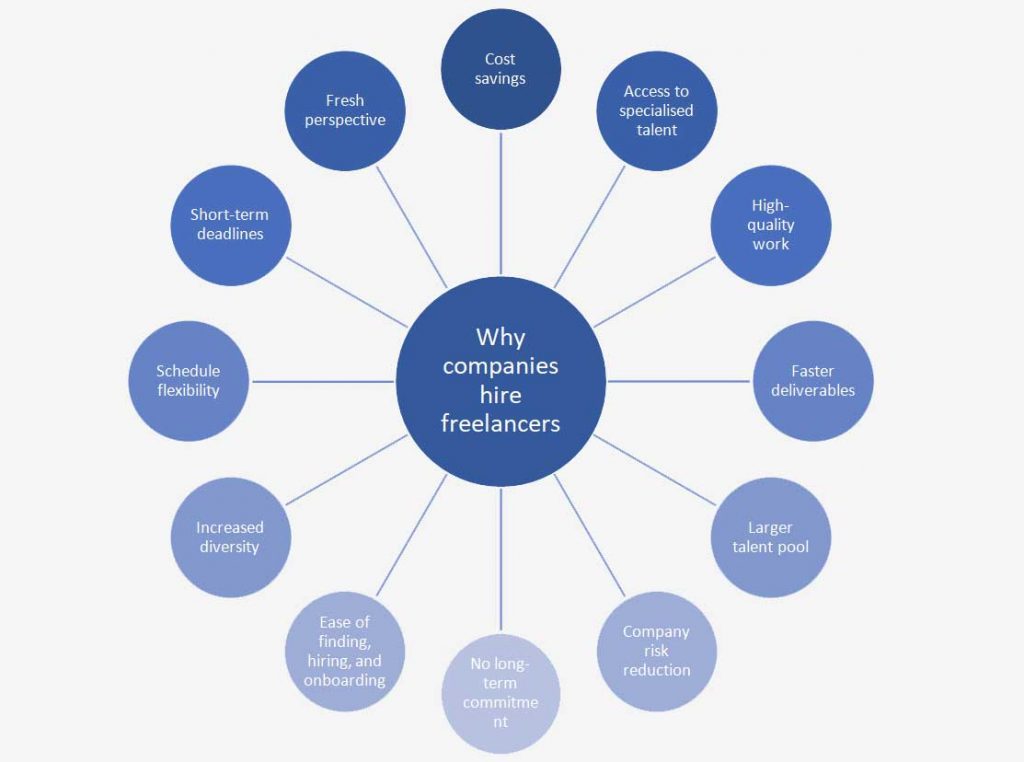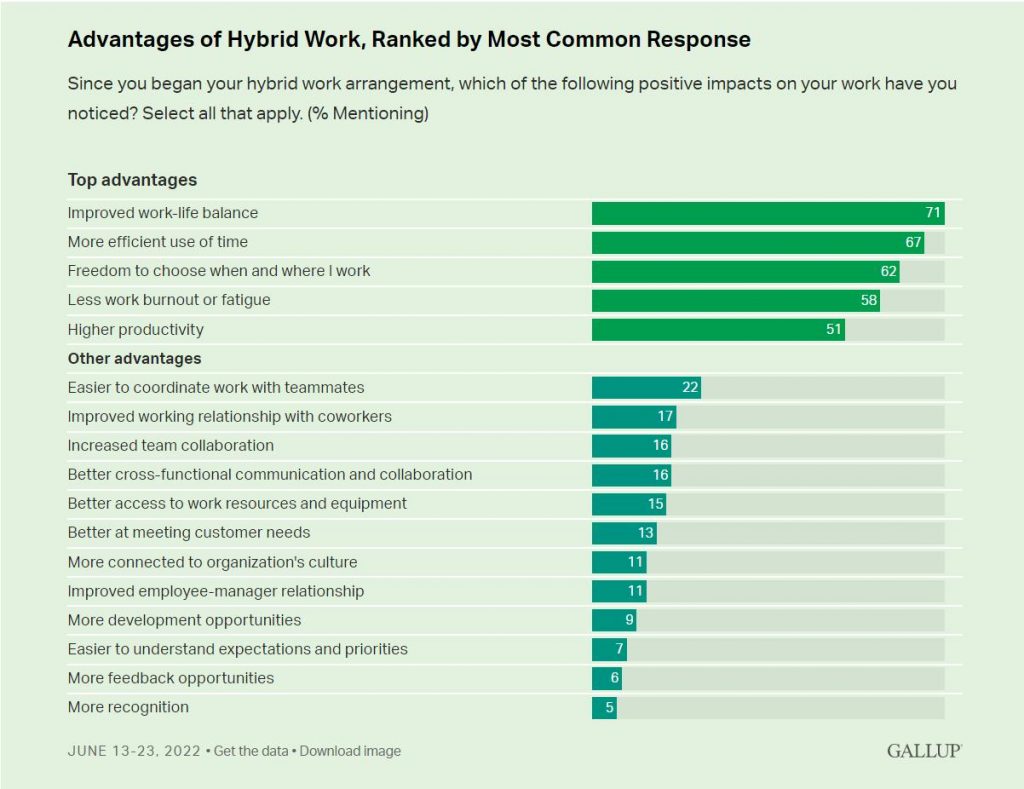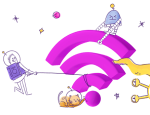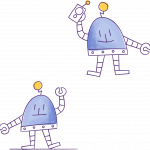Reimagining Work in 2023

We are all still reeling from the last three years of crises, upheavals and transformations. Businesses have had to adapt and so have the workers. The world of work is changing fast.
The changes bring to focus not only the need to adapt to new technologies, but also to take a long hard look at how employees are being engaged on a human level.
This era of transformation is an opportunity for companies to evaluate how they can unlock the full potential of their talent base, close the skills gaps that hinder their growth, and build elastic teams that can respond to changing demands. They need to be able to leverage technology to boost productivity and cost efficiency, while also enhancing human creativity and collaboration to stay competitive.
In this blog post, we will explore some of the ways that companies are reimagining how they work, learn and connect in the post-pandemic era.
Here are 3 ways businesses are reimagining work in 2023:
1. Unlocking talent
One of the key challenges that companies face today is finding and retaining talent with the right skills for their business needs. According to a recent report by McKinsey & Company, 87% of executives said they were experiencing skill gaps in their workforce or expected them within a few years. The report also found that reskilling and upskilling could help address 60% of these skill gaps.
New ways of working, which include remote work and hybrid models, are ideal to turn what we may perceive as limitations into opportunities to achieve longstanding talent goals.
For instance, freelance marketplaces have helped companies unlock talent by providing access to a large pool of skilled professionals who can work on a project basis. This allows companies to create elastic teams – flexible groups of workers who can assemble quickly around specific projects or tasks based on their availability, skills and interests and disband when they are done. Elastic teams of specialist resources can be hired project-by-project without having to invest in training or hiring full-time employees. The platforms are designed to help them scale up or down quickly, depending on their needs.
Upwork, a work marketplace of more than 16 million freelancers, provides features that enable enterprises to identify professionals with a specific skillset, browse their portfolios and reviews from past clients and then interview, hire and onboard them, and easily rehire for future projects.
A key benefit to these marketplaces that cannot be overlooked is diversity. Access to a global on-demand talent base, across a range of specialised skillsets, means that not only can companies broaden their diversity and inclusion searches more easily, and map them with specific time bound requirements, but can also incrementally experiment with incorporating true diversity of thought in their work culture.

However, this also requires a shift in how companies recruit, onboard, manage and retain their talent. Companies need to adopt digital tools and platforms that enable seamless collaboration across time zones and cultures, as well as provide continuous feedback, recognition and support for their employees. They also need to adopt agile methodologies and tools that enable them to define clear goals and roles, break down work into manageable chunks, track progress and outcomes, and communicate frequently and transparently.
2. Unlocking productivity and cost-efficiency
Hybrid workplaces have necessitated the use of automation to streamline work and release resources from tedious and time-consuming work. Automation can unlock productivity and cost-efficiency by reducing costs, improving quality and increasing flexibility. AI-powered tools such as ChatGPT and OpenAI are enabling the optimisation of a wide variety of tasks ranging from planning and reporting to content creation to writing and debugging code. A better digital experience is one of the top expectations from employees today. Under the banner of digital transformation, we are seeing companies adopt a range of automation technologies to divert underutilised creative energy to more strategic tasks.
Automation can eliminate human errors that may cause delays or rework. For example, automation can ensure that invoices are generated accurately and sent on time, or that orders are processed and shipped correctly. Automation can also improve the quality and consistency of business offerings by ensuring that they meet the required standards and specifications. Companies can standardise and automate quality checks, testing or verification processes that may be prone to human error or bias.

Automation looks different at different companies depending on the business scenario. Businesses that need service helpdesks leverage automation to standardise processes and language, and with an added AI layer, can personalise it all the more. DBS Bank in Singapore (and Southeast Asia’s largest bank) uses robotic process automation (RPA) to automate repetitive and manual tasks, such as data entry, verification and reconciliation. The bank also leverages AI to power its ‘customer science’ team, which provides insights and solutions for customers and employees, such as credit scoring, fraud detection and wealth management.
To unlock productivity and cost efficiency with automation, companies need to identify which tasks are suitable for automation, which tools or technologies are best suited for automating them, how automation will impact their workforce (e.g., reskilling needs), how automation will affect their customers (e.g., satisfaction levels) and, importantly, how automation will align with their strategy (e.g., differentiation vs cost leadership).
3. Unlocking life
Today’s workers are reprioritising their goals and aspirations. A Monster poll revealed that 66% of workers would quit their jobs if they were required to return to the office full-time. Whereas some are keen to reconnect at the office but are re-evaluating their expectations.
In 2021, accounting and consulting firm PwC became one of the biggest employers to announce a permanent remote work policy for its 40,000 U.S. client services employees. Many organisations became remote-first when they saw the efficiency gains they could realise from a digital business model. However, some businesses still need to have in-person days to be productive, and there are still many workers who actually prefer connecting with their teams in a physical space, in part or in full, to the isolation at home.
Either way, employee expectations in thepost-pandemic era are different from before. Work-life balance is being redefined.
There is now a huge emphasis on mental health -whether it’s sabbaticals and unlimited time off to pursue their interests, compressed work hours and work weeks, or broader access to telehealth services. Headspace Health, an offering that started out as a meditation app, and went on to make several acquisitions to advance DEI efforts and deepen its AI and robo-chat capabilities, now has more than 3,500 enterprise and health plan partners. In their “9 Future of Work Trends For 2023” feature, Gartner suggests that the best organisations will implement tangible benefits such as proactive paid time off before high-demand working periods, no-meeting Fridays, allotted wellness time and on-site trauma counsellors.

Flexible work goes a step beyond hybrid work – it empowers individuals to decide where, when and how they work.
The work side of work-life balance is crucial to keep the modern workforce engaged. Teams need seamless, remote-ready collaboration and tools to reduce dependencies and encourage autonomy. Importantly, they need the social network of the workplace to be supportive and authentic.
For example, some companies are offering complete WFH, but requiring teams to meet in-person periodically for social gatherings and team building activities. This is a way for workers to exercise autonomy over their work time, but also to keep the human connection of the workplace active and to be seen as a whole human being with varied needs rather than an employee bound by a singular work role.
Companies are realising that work-life balance has to be stretched a little further towards the life side of the equation.
The changes brought on by the last few years and the resulting remote and hybrid work models that have taken shape present both opportunities and challenges for the workplace. To fully unlock the potential value of their investments, companies are reimagining the way they work. They are leveraging technology to boost productivity and cost efficiency and also to enhance human creativity and collaboration. They are recognising that workers are reimagining their goals and aspirations. This requires a shift in recruitment and management practices, as well as the adoption of digital tools and platforms that enable seamless collaboration across time zones and cultures.



















